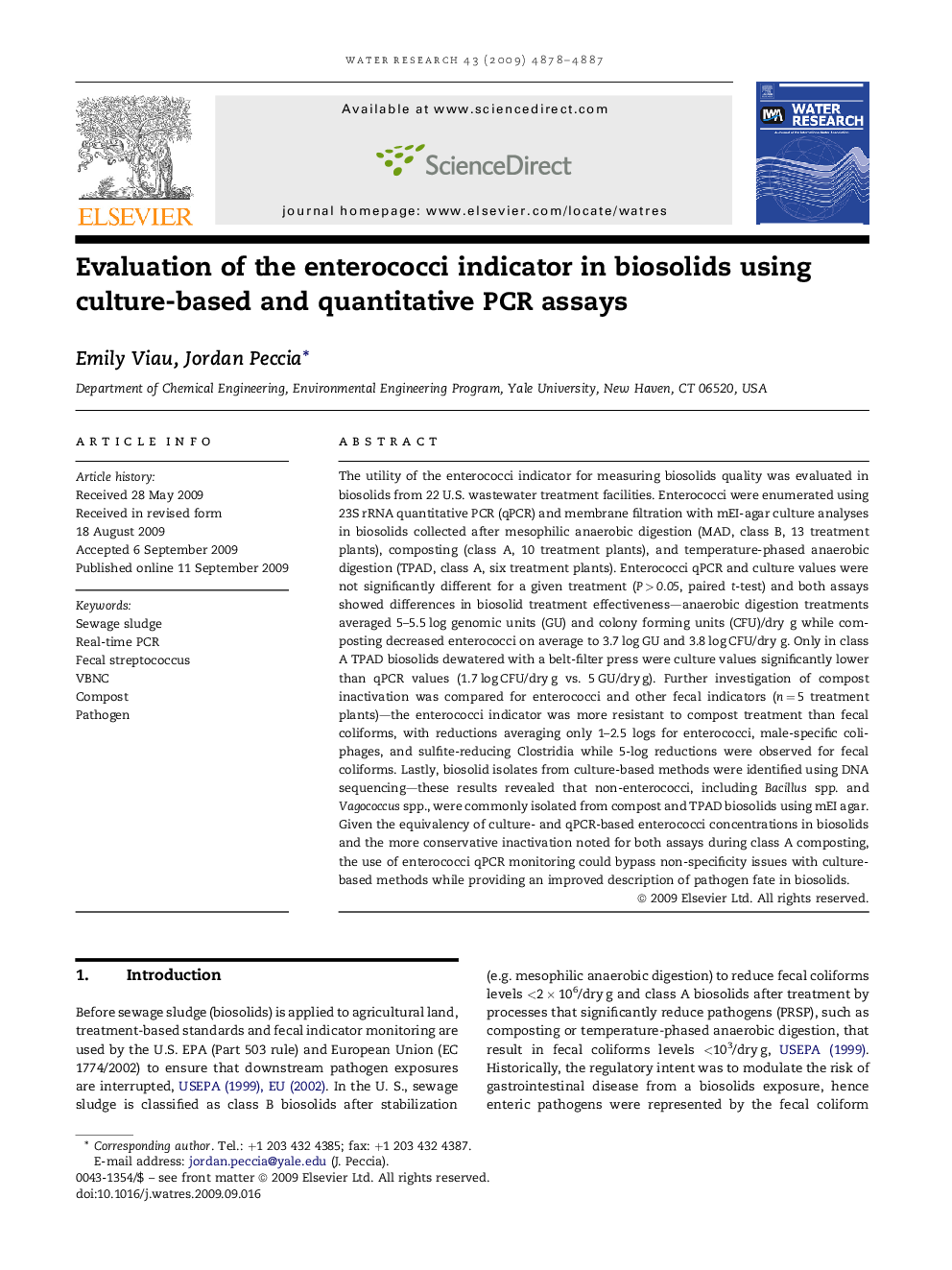| کد مقاله | کد نشریه | سال انتشار | مقاله انگلیسی | نسخه تمام متن |
|---|---|---|---|---|
| 4484409 | 1316919 | 2009 | 10 صفحه PDF | دانلود رایگان |

The utility of the enterococci indicator for measuring biosolids quality was evaluated in biosolids from 22 U.S. wastewater treatment facilities. Enterococci were enumerated using 23S rRNA quantitative PCR (qPCR) and membrane filtration with mEI-agar culture analyses in biosolids collected after mesophilic anaerobic digestion (MAD, class B, 13 treatment plants), composting (class A, 10 treatment plants), and temperature-phased anaerobic digestion (TPAD, class A, six treatment plants). Enterococci qPCR and culture values were not significantly different for a given treatment (P > 0.05, paired t-test) and both assays showed differences in biosolid treatment effectiveness—anaerobic digestion treatments averaged 5–5.5 log genomic units (GU) and colony forming units (CFU)/dry g while composting decreased enterococci on average to 3.7 log GU and 3.8 log CFU/dry g. Only in class A TPAD biosolids dewatered with a belt-filter press were culture values significantly lower than qPCR values (1.7 log CFU/dry g vs. 5 GU/dry g). Further investigation of compost inactivation was compared for enterococci and other fecal indicators (n = 5 treatment plants)—the enterococci indicator was more resistant to compost treatment than fecal coliforms, with reductions averaging only 1–2.5 logs for enterococci, male-specific coliphages, and sulfite-reducing Clostridia while 5-log reductions were observed for fecal coliforms. Lastly, biosolid isolates from culture-based methods were identified using DNA sequencing—these results revealed that non-enterococci, including Bacillus spp. and Vagococcus spp., were commonly isolated from compost and TPAD biosolids using mEI agar. Given the equivalency of culture- and qPCR-based enterococci concentrations in biosolids and the more conservative inactivation noted for both assays during class A composting, the use of enterococci qPCR monitoring could bypass non-specificity issues with culture-based methods while providing an improved description of pathogen fate in biosolids.
Journal: Water Research - Volume 43, Issue 19, November 2009, Pages 4878–4887